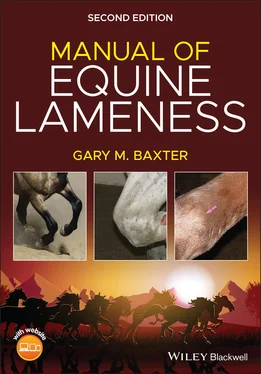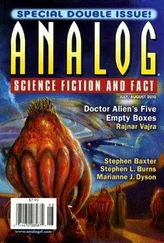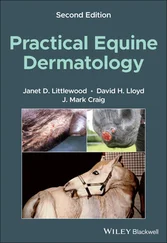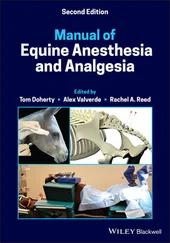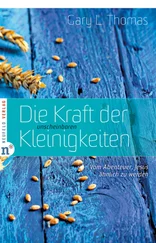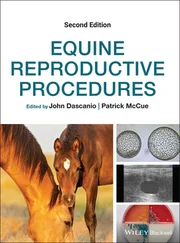1 Cover
2 Title Page
3 Copyright Page
4 Contributors
5 Preface
6 Common Terminologies and Abbreviations
7 About the Companion Website
8 1 Assessment of the Lame HorseIntroduction Adaptive Strategies of Lame Horses Classification of Lameness Anatomic Problem Areas Signalment and Use History Visual Examination at Rest Palpation and Manipulation Flexion Tests/Manipulation Subjective Assessment of Lameness Objective Assessment of Lameness Perineural Anesthesia Intrasynovial Anesthesia Bibliography
9 2 Common Conditions of the FootNavicular Region and Soft Tissue Injuries of the Foot Fractures of the Navicular (Distal Sesamoid) Bone Injuries to the CLs of the DIP Joint Coffin Joint and Distal Phalanx Miscellaneous Conditions of the Foot Septic Pedal Osteitis (PO) Penetrating Injuries of the Foot Laminitis Foot Care and Farriery Bibliography
10 3 Common Conditions of the ForelimbPastern Osteochondrosis (OC) of the PIP Joint Luxation/Subluxation of the PIP Joint Fractures of the Middle Phalanx (P2) Fractures of the Proximal Phalanx (P1) Desmitis of the Distal Sesamoidean Ligaments (DSLs) SDFT and DDFT Injuries in the Pastern FetlockOsteochondral (Chip) Fractures of Proximal P1 Fractures of the Proximal Sesamoid Bones Sesamoiditis Axial Osteitis/Osteomyelitis of the PSBs Traumatic OA of the MCP/MTP Joint Palmar/Plantar Osteochondral Disease Fetlock Subchondral Cystic Lesions (SCLs) Traumatic Rupture of the Suspensory Apparatus Palmar/Plantar Annular Ligament (PAL) Constriction and DFTS Tenosynovitis Metacarpus/MetatarsusBucked Shin Complex and Stress Fractures of Dorsal MCIII MCIII/MTIII Condylar Fractures Complete Fractures of the MCIII/MTIII (Cannon Bone) Metacarpal/Metatarsal Exostosis (Splints) Fractures of the Small MC/MT (Splint) Bones Suspensory Ligament (SL) Desmitis Degenerative Suspensory Ligament Desmitis (DSLD) Superficial Digital Flexor (SDF) Tendinitis (Bowed Tendon) CarpusCommon Digital Extensor (CDE) Tendon Rupture Extensor Carpi Radialis (ECR) Tendon Damage Intra‐Articular (IA) Carpal Fractures Accessory Carpal Bone Fractures OA of the Carpus/Carpometacarpal OA Carpal Sheath Tenosynovitis/Osteochondroma of Radius Antebrachium, Elbow, and HumerusFractures of the Radius Fractures of the ULNA Subchondral Cystic Lesions (SCLs) of the Elbow Bursitis of the Elbow (Olecranon Bursitis) Fractures of the Humerus Shoulder and ScapulaBicipital (Intertubercular Bursa) Bursitis Osteochondrosis (OC) of the Scapulohumeral (Shoulder) Joint Osteoarthritis (OA) of the Scapulohumeral (Shoulder) Joint Suprascapular Nerve Injury (Sweeny) Fractures of the Scapula/Supraglenoid Tubercle (SGT) Bibliography
11 4 Common Conditions of the HindlimbDistal Hindlimb and Foot Tarsus Tibia and Crus Stifle – Femoropatellar Region Stifle – Femorotibial Region Femur and Coxofemoral Region Bibliography
12 5 Common Conditions of the Axial SkeletonThe Pelvis Ilial Wing Fractures Tuber Coxae Fractures Acetabular Fractures Fractures of the Sacrum and Coccygeal Vertebrae The Sacroiliac (SI) Region Thoracolumbar Region/Back Supraspinous Ligament Injuries Fractures of the Spinous Processes Vertebral Fractures Discospondylitis Spondylosis Facet Joint OA and Vertebral Facet Joint Syndrome Neck and Poll Cervical Facet Joint OA Bibliography
13 6 Therapeutic OptionsSystemic/Parenteral Topical/Local Intrasynovial Intralesional Oral/Nutritional Nutraceuticals Manual Therapy Rehabilitation/Physical Therapy Bibliography
14 7 Musculoskeletal EmergenciesSevere Unilateral Lameness Severely Swollen Limb Long Bone Fractures/Luxations Synovial Infections Tendon and Ligament Lacerations Bibliography
15 Index
16 End User License Agreement
1 Chapter 1 Table 1.1 Occupation‐related lameness problems. Table 1.2 American Association of Equine Practitioners Lameness Scale. Table 1.3 United Kingdom Lameness Scale. Table 1.4 Guidelines for perineural local anesthesia. Table 1.5 Guidelines for intrasynovial anesthesia.
2 Chapter 2Table 2.1 Types of distal phalanx fractures and their recommended treatment...
3 Chapter 3Table 3.1 A standard exercise program recommended following tendon injury. ...
4 Chapter 6Table 6.1 Commonly used intra‐articular corticosteroids.Table 6.2 Commonly used hyaluronan preparations.Table 6.3 Commonly used NSAIDs and their modes of action, formulations, and...Table 6.4 Types of manual therapy, proposed mechanisms of action, and possi...
5 Chapter 7Table 7.1 Recommended contents of fracture first‐aid kit for horses.Table 7.2 Synovial fluid parameters used to aid diagnosis of synovial sepsi...Table 7.3 Systemic antimicrobials used to treat horses with synovial wounds...
1 Chapter 1 Figure 1.1 Chronic hindlimb lameness that has resulted in a wide flat foot o... Figure 1.2 Lateral view (a) and dorsopalmar (b) views of both front feet in ... Figure 1.3 Partial thickness dorsal hoof crack associated with a long toe an... Figure 1.4 Example of atrophy of the inner and outer thigh muscles of the le... Figure 1.5 Rear view of the pelvis of a horse with a history of an acute ons... Figure 1.6 Normal forefoot with structures labeled. Figure 1.7 A hoof is considered to be in Medial‐Lateral (ML) balance when an... Figure 1.8 Concavity of the left front foot in a horse with chronic laminiti... Figure 1.9 A front foot with severely overgrown heels that have resulted in ... Figure 1.10 Examples of several types of hoof testers. Left, GE Forge and To... Figure 1.11 Hoof testers are applied over the central third of the frog of t... Figure 1.12 Palpation of the heel bulbs to identify heat, pain, and swelling... Figure 1.13 Palpation of the pastern. Thickening in this region may suggest ... Figure 1.14 Palpation of the distal sesamoidean ligaments, branches of the S... Figure 1.15 Tension is applied to the collateral ligaments supporting the fe... Figure 1.16 The finger marks the palmar recesses of the fetlock joint capsul... Figure 1.17 Palpation of the digital flexor synovial sheath around the super... Figure 1.18 Digital pressure applied to the apical sesamoid region to detect... Figure 1.19 The fetlock flexion test is performed by extending the carpus an... Figure 1.20 Palpation over the dorsal middle third of the metacarpus to iden... Figure 1.21 Palpation of the medial (axial) surfaces of the small metacarpal... Figure 1.22 Palpation of the origin of the suspensory ligament in the proxim... Figure 1.23 Method that can be used to apply digital pressure to the suspens... Figure 1.24 Method that can be used to apply digital pressure to the suspens... Figure 1.25 Palpation of the flexor tendons with the fetlock flexed to permi... Figure 1.26 Effusion of the extensor carpi radialis tendon sheath is usually... Figure 1.27 Effusion of the radiocarpal joint was visible and easily palpabl... Figure 1.28 Flexion of the carpus to identify a painful response. In the nor... Figure 1.29 The dorsal articular margins of the carpal bones can be palpated... Figure 1.30 Palpation of the accessory carpal bone is best done with the car... Figure 1.31 Elevating the limb into extension to flex the elbow joint extend... Figure 1.32 Atrophy of the shoulder muscles in young horses is often seen wi... Figure 1.33 Thumb pressure applied just cranial to the infraspinatus tendon ... Figure 1.34 Young horse with effusion of the TC joint that is easily compres... Figure 1.35 Effusion of the tarsal sheath on the medial aspect of the tarsus... Figure 1.36 Effusion within the calcaneal bursa often can be palpated as flu... Figure 1.37 Enlargement of the medial aspect of the distal tarsus (arrow). Figure 1.38 Limb and hand positioning to perform the “Churchill” test to det... Figure 1.39 Tendinitis of the SDFT in the proximal metatarsal region, which .
Читать дальше
